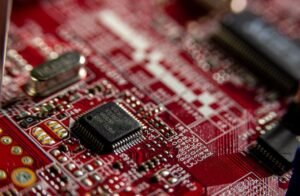Neuralink Goals
Neuralink is a neurotechnology company founded by Elon Musk with the goal of developing implantable brain–machine interface (BMI) technology. The company aims to create a high-bandwidth, bi-directional interface between humans and computers, allowing individuals to interact with computers or control external devices using their thoughts. This technology has the potential to revolutionize the field of neurology and open up new possibilities for human-computer interaction.
Key Takeaways:
- Neuralink endeavors to develop implantable BMI technology.
- The goal is to create a bi-directional interface between humans and computers.
- Individuals would be able to control external devices using their thoughts.
**Neuralink’s primary objective is to merge the human brain with AI** in order to enhance cognitive abilities and potentially address neurological disorders. By directly linking the brain to external devices, the company aims to facilitate seamless communication between humans and machines. This could lead to advancements in treating conditions such as Alzheimer’s disease, spinal cord injuries, and even mental health disorders.
While the technology is still in its infancy, **Neuralink’s innovative research has shown promising results**. The company has made significant strides in developing a high-bandwidth brain-machine interface that can be implanted in the brain with minimal invasiveness. This is achieved through the use of small, flexible threads that are thinner than a human hair, allowing for precise and targeted interaction with neural networks.
The Potential Applications of Neuralink Technology
Neuralink’s BMI technology opens up a wide range of possibilities for its applications. Here are some potential use cases:
- Restoring mobility: **Neuralink could enable individuals with spinal cord injuries to control robotic limbs and regain mobility.**
- Enhancing cognitive abilities: **The interface may allow for direct access to vast amounts of information, augmenting human intelligence.**
- Treating neurological disorders: **Neuralink may revolutionize the field of neurology by providing new therapies for conditions like Parkinson’s disease and epilepsy.**
Neuralink Progress: Research and Development
Let’s take a closer look at the progress Neuralink has made:
| Year | Key Milestone |
|---|---|
| 2016 | Neuralink is founded by Elon Musk. |
| 2019 | First public demo: presentation on Neuralink’s progress and future plans. |
| 2020 | Publication of a scientific paper detailing Neuralink’s progress in developing advanced brain-machine interface technology. |
Neuralink’s technology faces numerous challenges, such as ensuring the long-term stability and safety of implanted devices, addressing ethical concerns surrounding brain augmentation, and gaining regulatory approval for clinical applications. However, the company’s progress so far has generated significant excitement within the scientific and tech communities.
Conclusion
Neuralink’s ambitious goals in developing implantable brain-machine interface technology have the potential to revolutionize how humans interact with computers and advance the field of neurology. With ongoing research and development, Neuralink is making progress towards its vision of merging the human brain with AI. The future implications of this technology are vast, ranging from medical advancements to enhancing cognitive abilities. This technological frontier holds great promise for improving the lives of individuals with neurological disorders and pushing the boundaries of human potential.

Neuralink Goals
Common Misconceptions
One common misconception people have about Neuralink’s goals is that it aims to control people’s thoughts and actions. In reality, Neuralink seeks to develop brain-computer interfaces to help individuals with neurological conditions regain functions they have lost. It aims to create a seamless connection between the human brain and technology, enhancing the quality of life for those with disabilities.
- Neuralink’s goal is to improve the lives of individuals with neurological conditions.
- It aims to develop brain-computer interfaces to restore lost functions.
- The focus is on creating a seamless connection between the brain and technology.
Another misconception is that Neuralink intends to make humans superintelligent or create a race of cyborgs. This assumption may arise from the company’s objective of enhancing human cognition with the use of brain implants. However, the primary aim is not to make individuals “smarter” but rather to assist people with neurological conditions in regaining basic cognitive abilities they have lost.
- Neuralink does not seek to create superintelligent humans.
- The main goal is to assist individuals with cognitive impairments.
- Enhancing cognition is meant to restore basic cognitive functions.
There is a misconception that Neuralink’s technology is only for the wealthy and will not be accessible to the general public. While the company’s initial focus may be on medical applications, Neuralink’s long-term goal is to make brain-computer interfaces available and affordable to all. By refining the technology and driving down costs, Neuralink aims to eventually democratize its advancements and make them accessible to a wider population.
- Neuralink’s technology is not intended solely for the wealthy.
- The company aims to make brain-computer interfaces accessible to all.
- Initial focus on medical applications will eventually lead to wider availability.
Contrary to popular misconceptions, Neuralink is not about replacing natural human abilities with artificial ones. Instead, the company’s goal is to augment human capabilities by integrating technology with the human brain. Neuralink’s brain-computer interfaces are developed with the intention of providing additional functionalities and improving the quality of life for individuals with disabilities, rather than replacing their natural abilities.
- Neuralink does not aim to replace natural human abilities.
- The goal is to augment human capabilities with technology.
- Brain-computer interfaces are meant to provide additional functionalities.
Finally, some people believe that Neuralink’s technology is unsafe and poses significant risks to human health. While any invasive medical procedure carries inherent risks, Neuralink is committed to thorough research, rigorous testing, and extensive safety measures. The company aims to ensure that its technology is safe and effective before it is made available for clinical use, working closely with regulatory authorities to adhere to rigorous safety standards.
- Neuralink is dedicated to conducting thorough research and testing for safety.
- Extensive safety measures are being implemented to mitigate risks.
- The company works closely with regulatory authorities to adhere to safety standards.

Overview of Neuralink Goals
Neuralink, the brain-machine interface company founded by Elon Musk, aims to revolutionize the way humans interact with technology. By developing innovative neural implant technology, Neuralink aims to address various neurological disorders and enhance communication capabilities. This article explores 10 key points that highlight the ambitious goals of Neuralink, shedding light on the potential it holds for the future.
Implantable Neural Interfaces
Neuralink is focused on developing implantable neural interfaces that can seamlessly integrate with the human brain. These interfaces have the potential to enhance cognitive abilities, treat neurological conditions, and enable direct communication between the brain and external devices.
Brain Control of Prosthetics
Neuralink aims to create a breakthrough in prosthetics by allowing individuals to control artificial limbs and devices with their minds. By connecting neural signals from the brain to external devices, this technology has the potential to restore mobility and independence to those with physical disabilities.
Augmented Reality Integration
Neuralink’s long-term vision includes integrating augmented reality (AR) directly with the human brain. This integration could enable the projection of virtual information directly into the user’s field of vision, leading to immersive experiences and enhanced cognitive capabilities.
Treatment for Neurological Disorders
One of Neuralink’s primary goals is to develop therapeutic approaches for various neurological disorders. By interfacing with the brain’s neural circuits, Neuralink devices could potentially alleviate symptoms and provide new treatment options for conditions such as Parkinson’s disease, epilepsy, and depression.
Improving Memory and Learning
Through direct neural interfacing, Neuralink aims to enhance memory and learning capabilities in individuals. If successful, this technology could revolutionize education and provide individuals with unprecedented cognitive enhancements.
Real-Time Monitoring and Diagnostics
Neuralink’s technology also holds the potential for real-time monitoring and diagnostics of brain activity. By providing detailed insights into neural patterns and abnormalities, this could enable early detection of neurological disorders and help predict and prevent potential health issues.
Enhanced Communication Abilities
Neuralink’s ultimate goal is to establish a direct, high-bandwidth connection between the human brain and external devices, enabling seamless communication. This could revolutionize how humans interact with the digital world, opening up new avenues for communication, creativity, and collaboration.
Preserving Human Identity
Neuralink acknowledges the importance of preserving human identity while advancing brain-machine interface technology. It aims to develop solutions that respect individual autonomy and ensure that brain implants remain entirely optional and reversible, further promoting acceptance and adoption.
Collaboration with Medical Experts
Neuralink actively collaborates with medical experts, neuroscientists, and researchers to gain insights and ensure the ethical and safe development of its technologies. This collaborative approach fosters an interdisciplinary environment that pushes the boundaries of understanding and innovation.
Conclusion
The goals of Neuralink are undeniably ambitious, aiming to revolutionize the capabilities of the human brain and unlock new levels of communication, health, and cognition. With the potential to treat neurological disorders, improve memory, and enhance prosthetics, Neuralink presents a considerable opportunity for transforming human experience and opening up exciting possibilities for the future.
Neuralink Goals
Frequently Asked Questions
FAQ 1: What is Neuralink?
Neuralink is a neurotechnology company that aims to develop implantable brain-machine interfaces (BMIs) to enhance human cognition and communication.
FAQ 2: What are the goals of Neuralink?
The goals of Neuralink are to create interfaces that connect human brains with computers, enabling individuals with neurological disorders to regain functionality and ultimately augment human capabilities through the integration of artificial intelligence.
FAQ 3: How does Neuralink plan to achieve its goals?
Neuralink plans to achieve its goals by developing high-bandwidth, low-latency brain-machine interfaces that can be implanted in the brain. These interfaces will be designed to not only read neural activity but also provide electrical stimulation to neurons, allowing bidirectional communication between the brain and external devices.
FAQ 4: Who can benefit from Neuralink’s technology?
Neuralink’s technology has the potential to benefit individuals with neurological conditions such as paralysis, spinal cord injuries, and neurodegenerative diseases. It could also offer new opportunities for cognitive enhancement, memory improvement, and direct communication with computers or other external devices.
FAQ 5: Will Neuralink’s technology be safe and reliable?
Neuralink is committed to ensuring the safety and reliability of its technology. The company follows rigorous testing and regulatory standards to minimize risks associated with brain implantation. Ongoing research and development efforts focus on enhancing device performance, durability, and long-term compatibility.
FAQ 6: Are there any ethical considerations associated with Neuralink’s goals?
Neuralink acknowledges the importance of ethical considerations in its mission. The company is committed to transparency, accountability, and respecting individual privacy. It works closely with experts in various fields to address ethical challenges and ensure responsible development and use of its technology.
FAQ 7: What are some potential applications of Neuralink’s technology?
Potential applications of Neuralink’s technology include restoring motor function in individuals with paralysis, improving communication abilities for those with speech impairments, advancing neuroscientific research, and revolutionizing human-computer interaction by enabling direct brain control of external devices.
FAQ 8: How does Neuralink plan to collaborate with the medical community?
Neuralink actively seeks collaboration with the medical community to ensure its technology is developed and deployed in a way that aligns with established medical standards and best practices. The company engages in ongoing dialogue with medical professionals, researchers, and regulatory bodies to gather insights and incorporate feedback into its development and deployment strategies.
FAQ 9: What is Neuralink’s timeline for achieving its goals?
Neuralink’s timeline for achieving its goals can vary due to the complex nature of neurotechnology development. The company is dedicated to making steady progress and has already conducted successful tests on animals. While specific timelines cannot be provided, Neuralink remains focused on advancing its technology as efficiently and safely as possible.
FAQ 10: How can I stay updated on Neuralink’s progress?
To stay updated on Neuralink’s progress, you can visit the official Neuralink website and subscribe to their newsletter. Additionally, following Neuralink’s social media channels and engaging with their public announcements can provide insights into the company’s latest developments and milestones.




